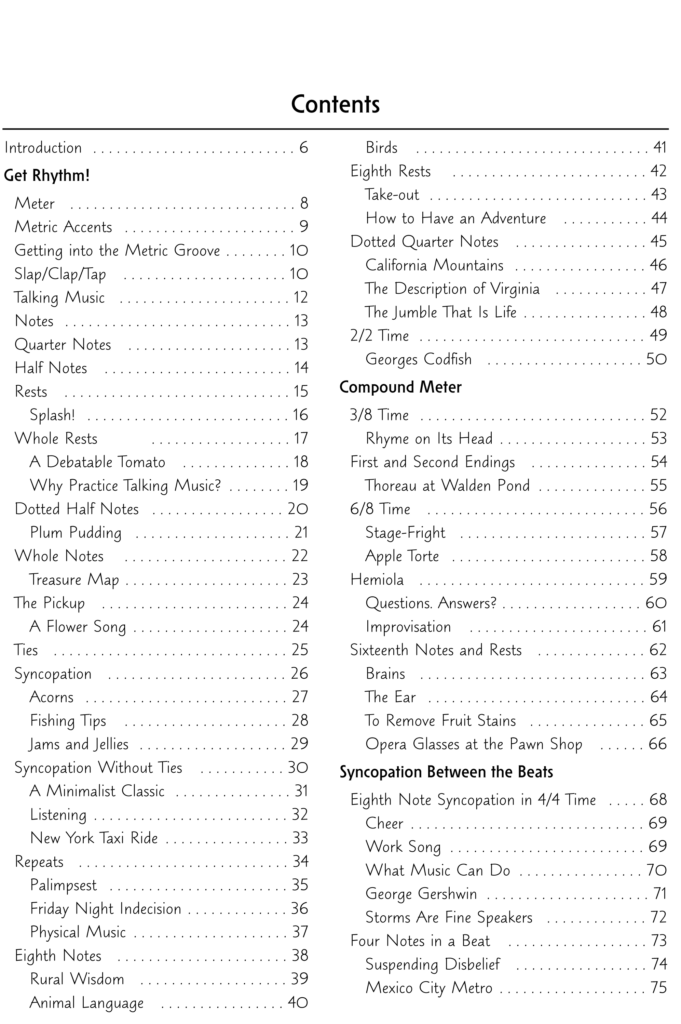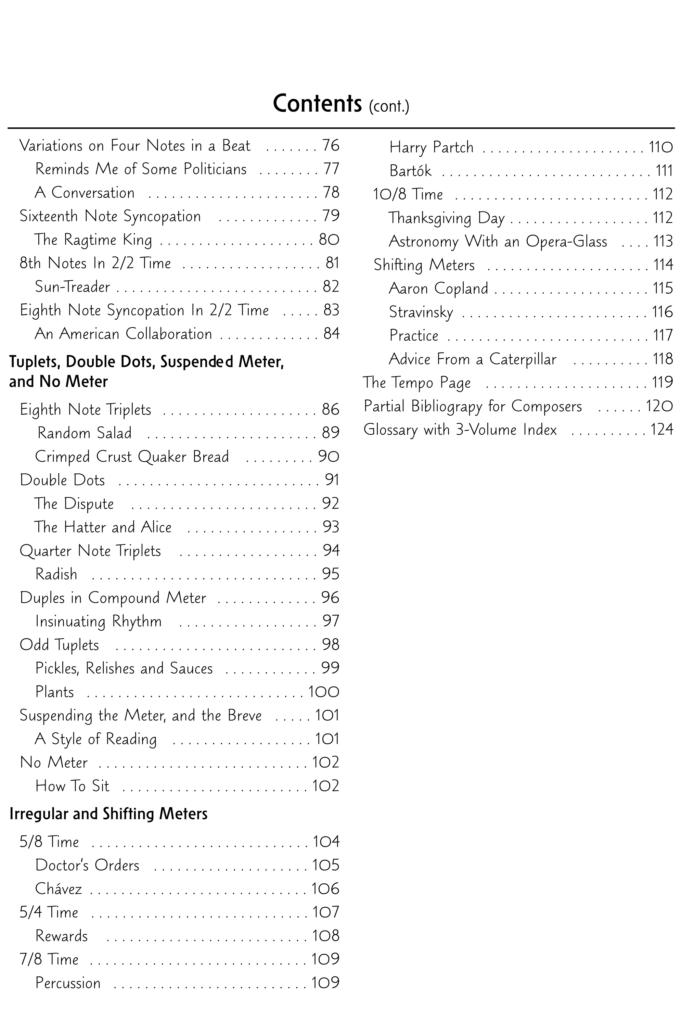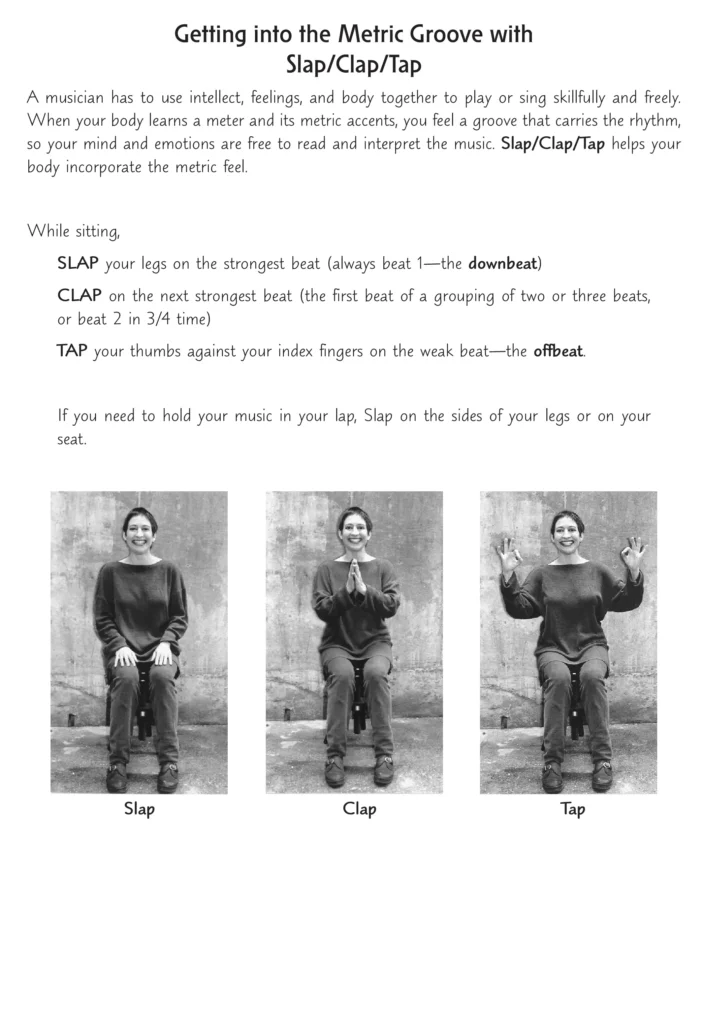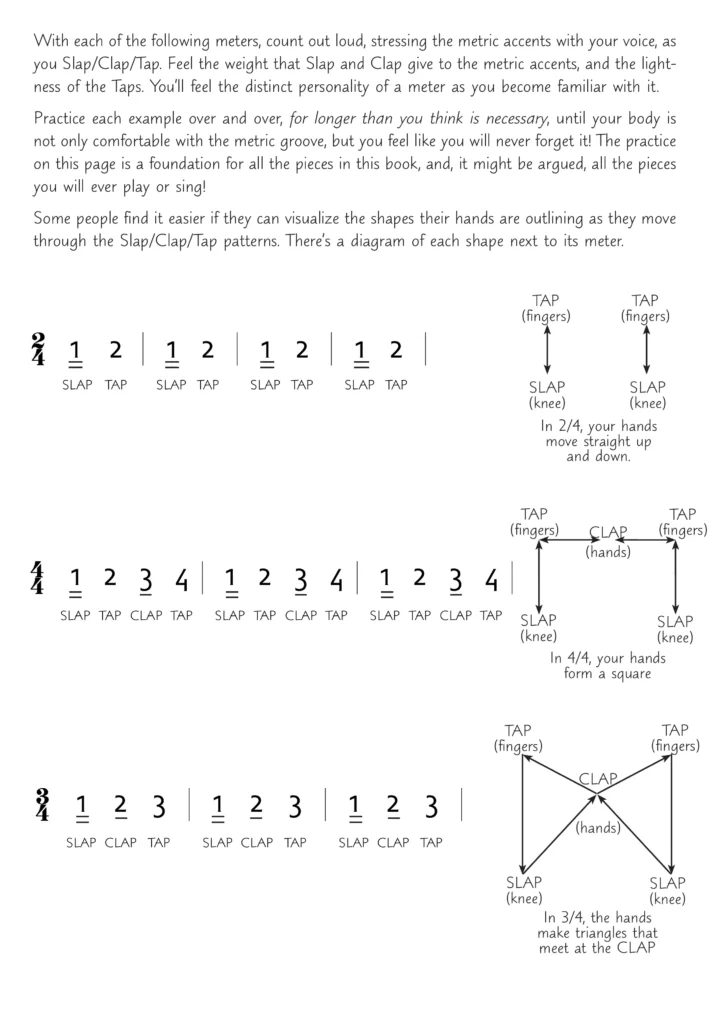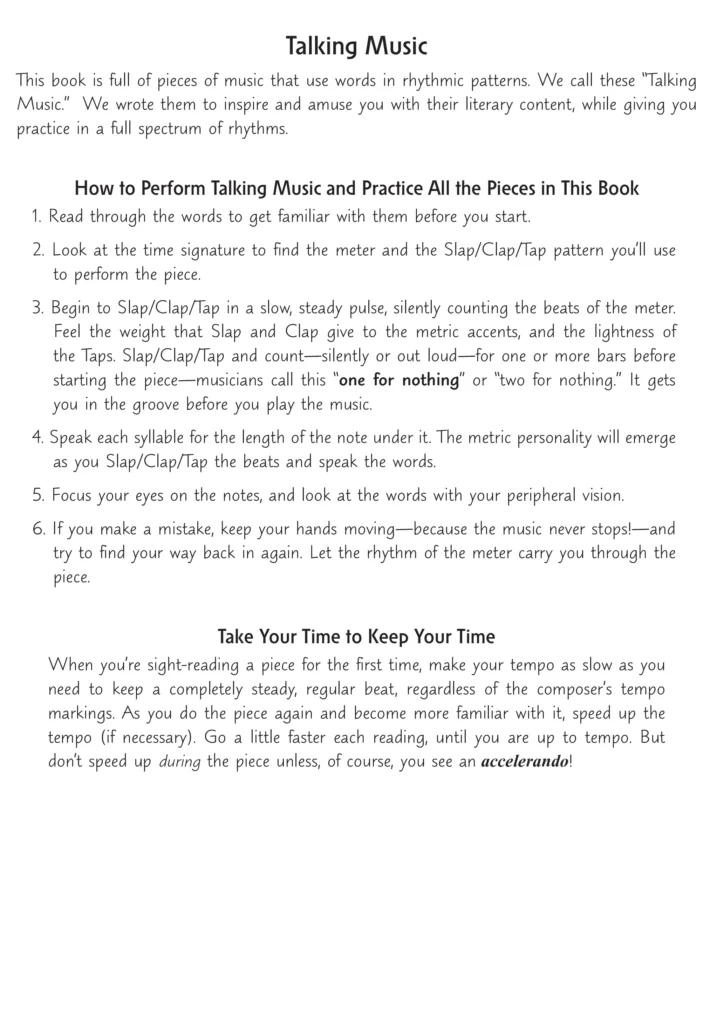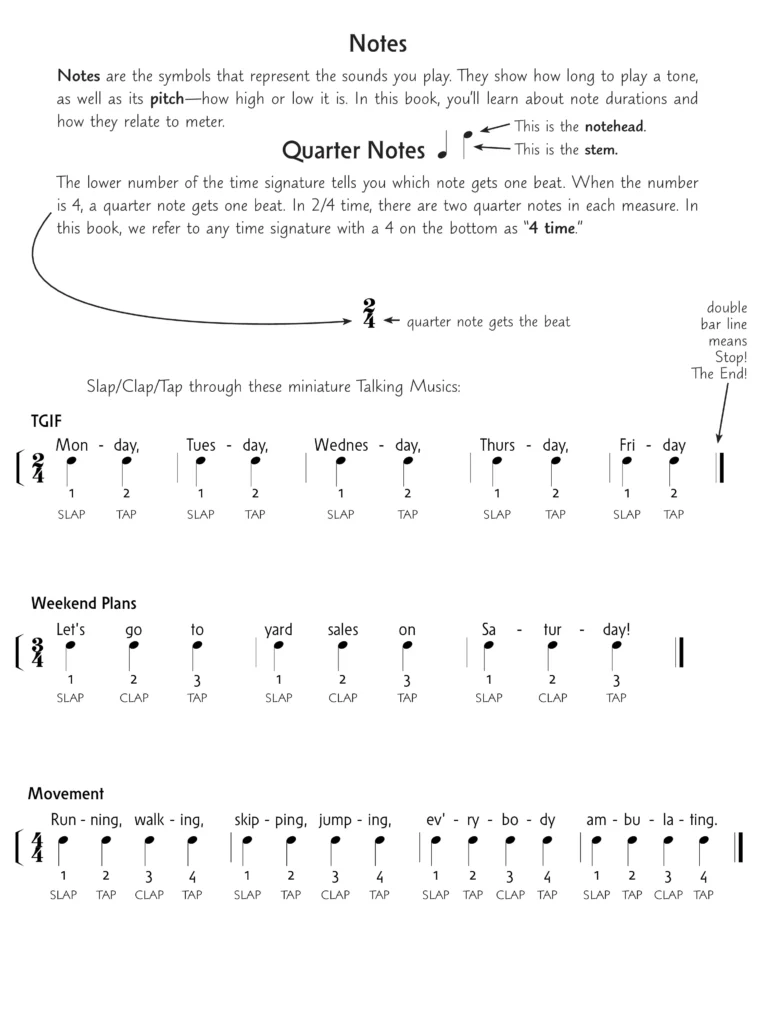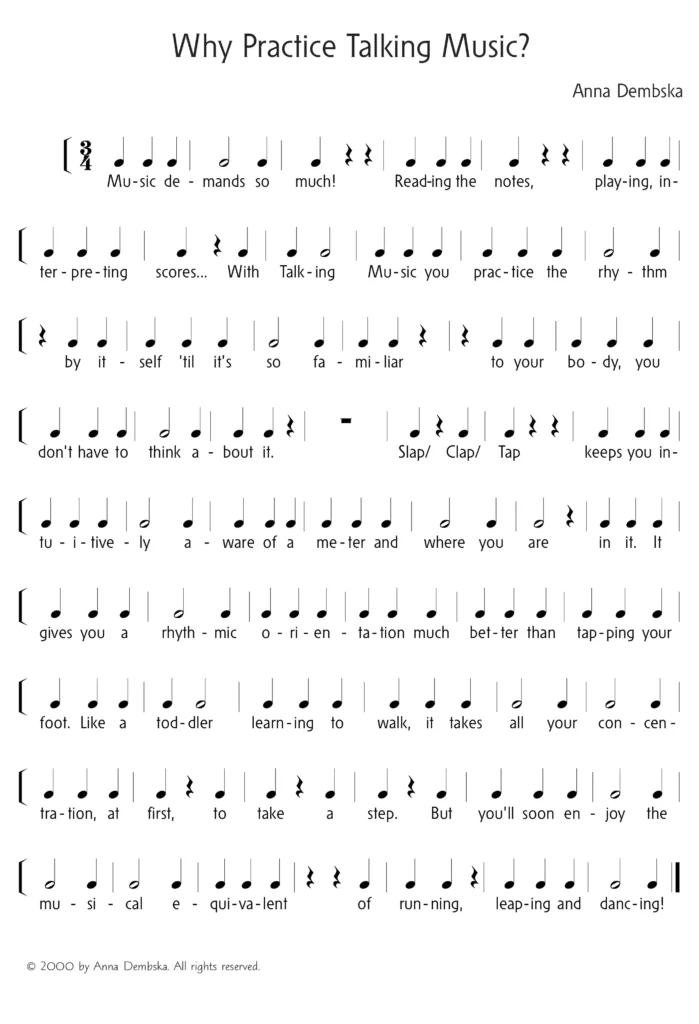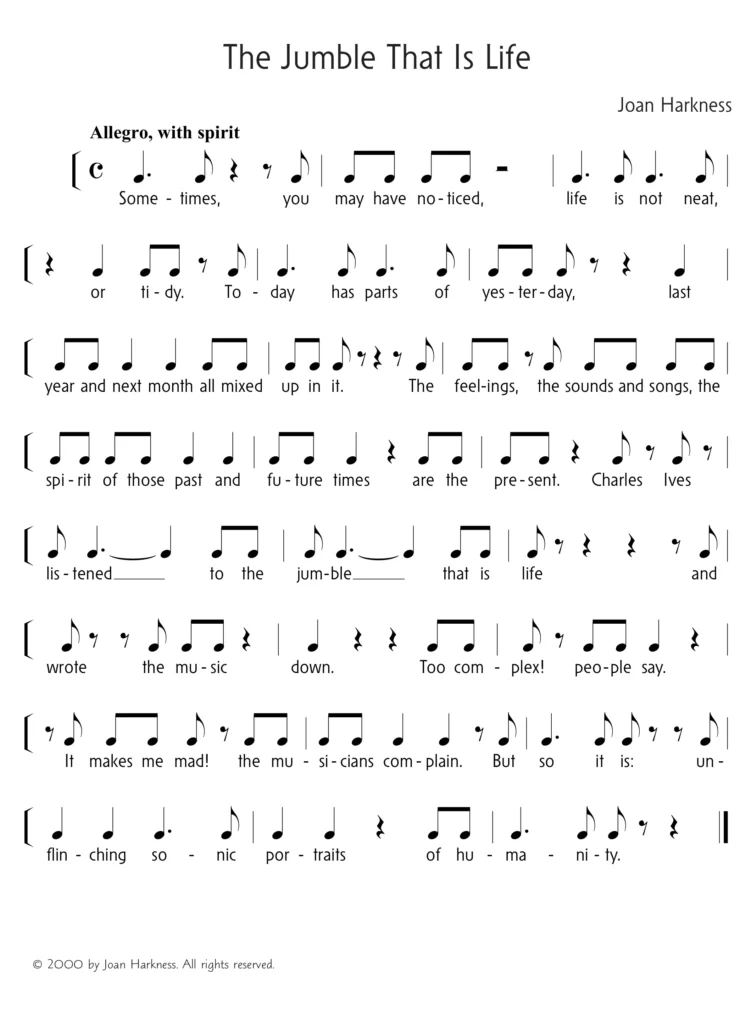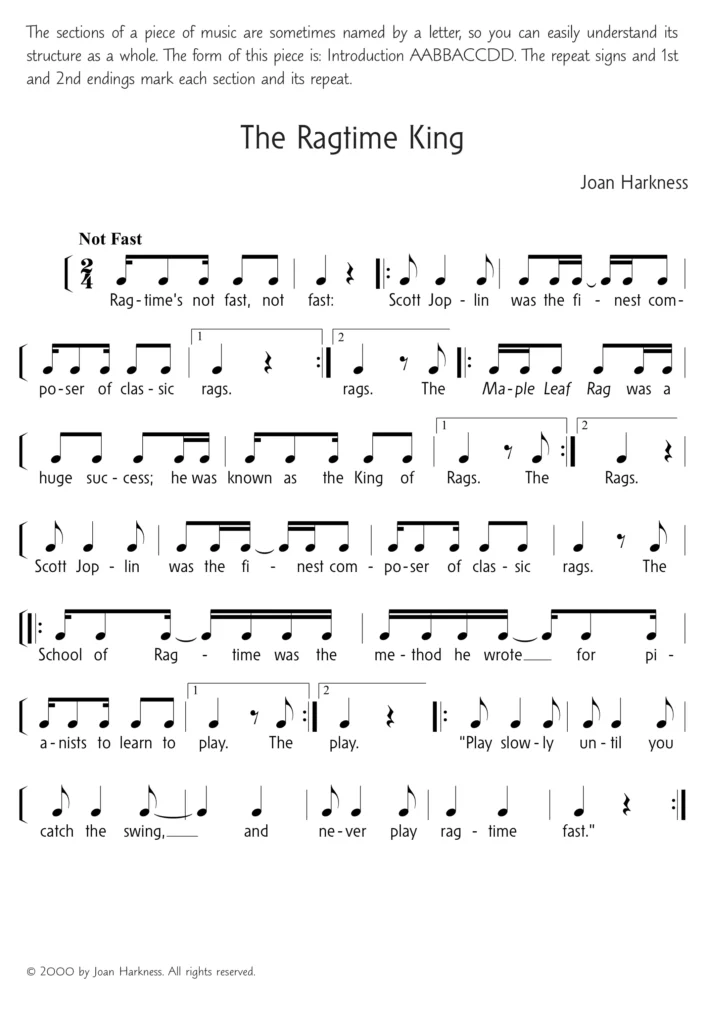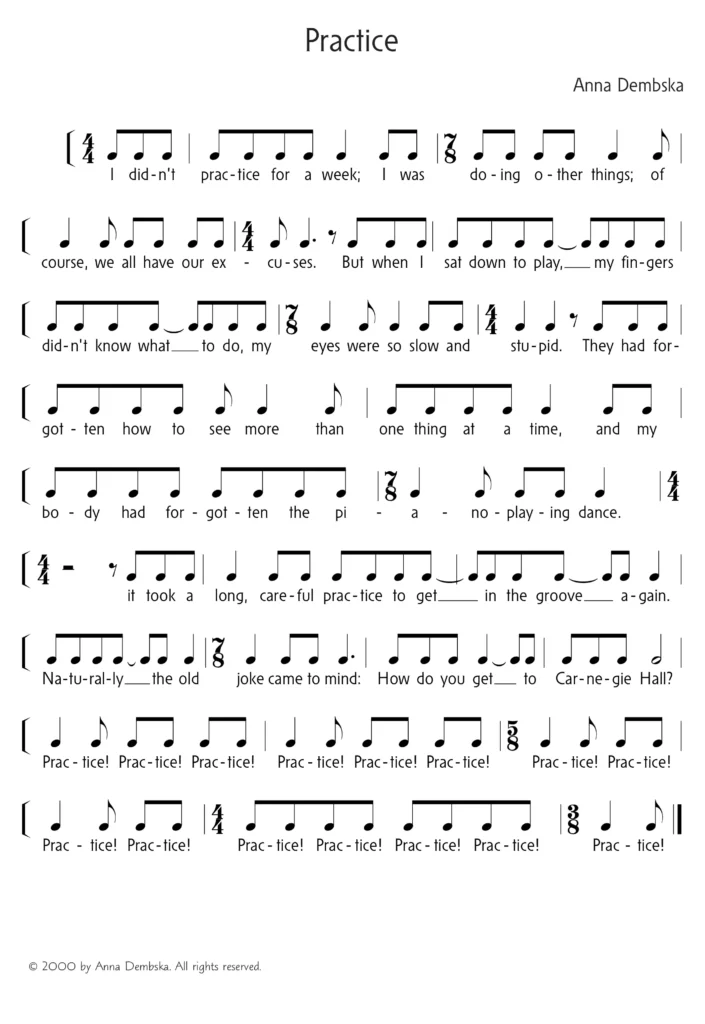You’ve Got Rhythm
read music better by feeling the beat
CHOOSE YOUR FORMAT
You’ve Got Rhythm Is a complete method for learning to read rhythm, using lyrics and simple gestures to reinforce the rhythmic feel.
You’ve Got Rhythm helps us transform the abstract dots on any page of music into living physical sensations that lead to a vibrant and visceral understanding of rhythm. It makes music come alive.
Raj Bhimani, piano teacher
Starting with the basics and advancing to sophisticated and shifting rhythmic patterns, You’ve Got Rhythm guides you step by step to more confident sight-reading and solid rhythmic literacy.
You’ve Got Rhythm is available in both hard-copy and digital forms. The 126-page book can be used by itself or with optional digital recordings. The downloadable PDF version includes audio, and is divided into beginning, intermediate, and advanced sections sold individually.
Music learners of all ages and all instruments and voices can benefit from our surprising, fun, and physical approach to reading music.
You’ve Got Rhythm …
tackles music-reading problems at the root—by focusing on rhythm.
The magic of You’ve Got Rhythm is “Talking Music”—spoken-word compositions that use thigh slaps, hand claps, and finger taps to help you learn to read rhythm fast by feeling the rhythm as you read the music.
I came away with a whole different understanding and feeling for rhythm. No matter how black a sheet of music is now, I don’t feel intimidated. I can’t believe how quickly you can get at core meanings and values using it.
Martin Nagle, Michigan

makes reading music feel natural because you feel the beat as you read and perform.
You’ll learn to sight-read and perform steadily and smoothly at tempo, even with music you’ve never seen before.
Sight-reading is transformed from a nerve-wracking task into a fun, tricky, dance-like game.
Just what I’ve been looking for. At last—a method that makes rhythm concrete! My students love them. Thank you! Thank you!
Melissa sweet, flute teacher, New York
teaches step-by-step, from basic notation to advanced rhythmic skills.

The book’s friendly design and step-by-step structure invite beginners in—and also challenge advanced musicians to polish their skills.
I’m loving You’ve Got Rhythm. I ‘m learning so much and it’s opening doors to music skills I felt ‘shut out of’ growing up. Slap/Clap/Tap really works for me.
Sarah Pirtle, musician & educator, Massachusetts
uses lyrics not only to express the rhythm, but also educate, entertain, and explore.

The lyrics—from literary classics and vintage household hints to our own musings on composers, music, and life—are fun, funny, thought-provoking, and inspirational.
I can just see a classroom of people slapping their thighs, clapping their hands, and tapping their fingers while reciting together, ‘We wish that Americans appreciated good radishes and used them as largely as do the French …’
Ed Roseman, author, Edly’s Music Theory for Practical People
Finally: relief for the rhythmically challenged—and without that nasty medicinal taste!
How It Works
You’ve Got Rhythm uses two simple but powerful tools: Slap/Clap/Tap and Talking Music.
Slap/Clap/Tap: the essence of You’ve Got Rhythm
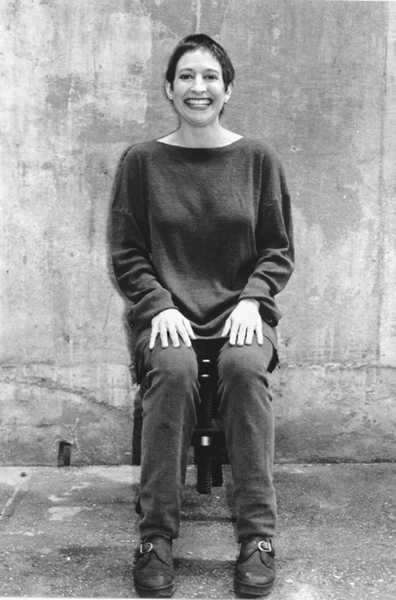
slap
your legs on the strongest beat (the downbeat)
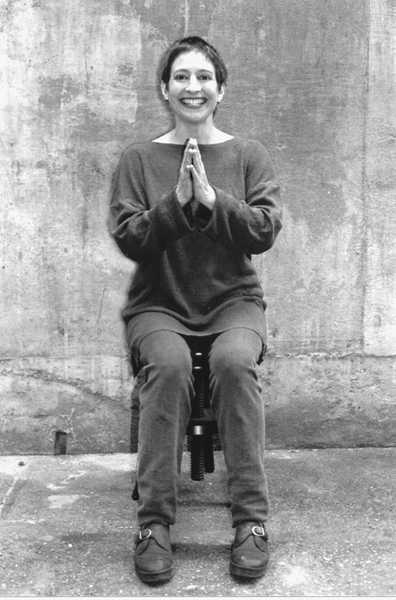
clap
on the next strongest beats (secondary accents)
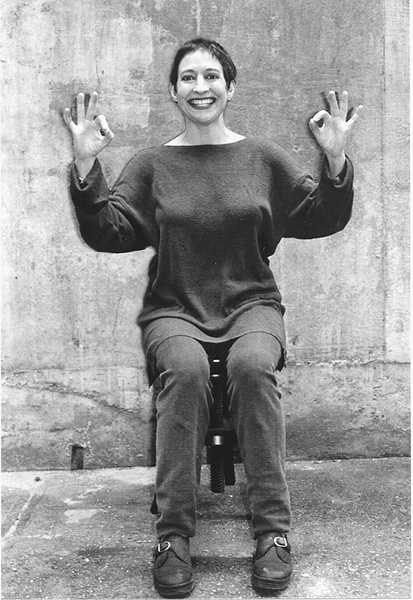
tap
your thumbs against your index fingers on the weak beats (the offbeats)
The Exercises: Talking Music
Speak the words in the rhythm notated as you keep the beat by slapping, clapping, and tapping according to the strong and weak metric accents.
You’ll find that the lyrics support the musical meter.
Sample Pages
Reviews & Testimonials
About the Authors

Thirty years ago, Anna Dembska and Joan Harkness met in New York City as a result of a phone call — to a wrong number. Their subsequent collaborations include the first production of Anna’s chamber opera The Singing Bridge, and their theatrical song recital Pedestrian and Holy: Acts of American Music.
Like many musicians, Anna and Joan teach as well as perform. In their students and audiences alike, they perceived a desire for friendly, mindful, and imaginative approaches to achieve deep musicianship — especially for those just beginning their studies. They founded Flying Leap Music in 1999 hoping fulfill these earnest wishes.
Joan (now known as Mahalia LoMele) is a pianist and teacher. A Juilliard School graduate, she pursued a freelance career in New York City, working with singers, instrumentalists, theatrical productions, churches, and teaching piano to adults and children.
In 2003 she left the city to carve out a very different life with her partner, artist Bachrun LoMele, in the California Sierra Nevada foothills. The quiet forest environment of her home has led her to explorations of sound and the potential of deeper meanings within music. Her current projects include sound-making from the strings of the piano using plumbing hardware and percussion mallets, creative writing, and studies of Islamic geometric patterns. African dance, which she began studying in New York, continues to be a centering expression of the creativity of the body.


Anna Dembska has been creating and performing musical events for over 40 years, from experimental music theater and concert music to sound installations and free improvisation. As a voice teacher and choral director, her passion is to encourage all people to enjoy and expand the range and possibilities of their voices, musical expression, and listening ears.
After many years of splitting her time between New York City and Maine, she moved to Maine full time in 2009, where she encountered tai chi, which has sublimely transformed her artistic and daily life. Her most recent work, originating in the pandemic to find a kind of music that could be sung together on Zoom from different locations, is inspired by tai chi’s lessons of patience, responsiveness, quiescence within movement, and openness to unexpected possibilities.
